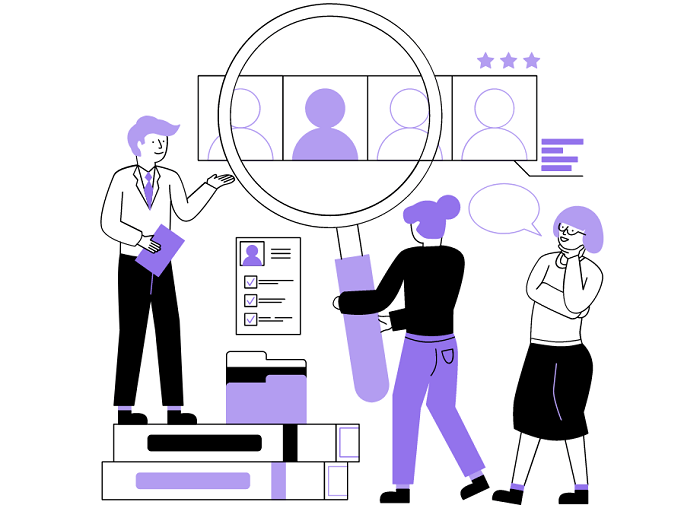Are you launching a new SaaS product and want to ensure its success in the market? One effective strategy is to recruit and engage beta testers. Beta testers play a vital role in providing valuable feedback, identifying bugs, and shaping the final product. But how do you go about finding and keeping these valuable testers engaged?
In this blog post, we will guide you through the process of recruiting and engaging beta testers for your SaaS product. Discover effective strategies, tips, and best practices to attract the right testers, create a positive testing experience, and maximize the benefits of beta testing. Get ready to take your SaaS product to the next level with the help of dedicated beta testers.
What is Beta Tester?
A beta tester is an individual who actively engages with a product during its beta phase to identify and report any issues, bugs, or usability concerns. This critical testing phase occurs after the alpha testing, where the product undergoes initial internal testing by the development team. Beta testers are external users who volunteer or are selected to test the product in real-world scenarios, replicating end-user experiences.
What are the Responsibilities and Activities of Beta Testers?
Here we have listed down the responsibilities and activities for beta testers to perform:
- Thoroughly testing the product’s features and functionalities
- Executing specific actions and tasks to uncover potential flaws
- Providing feedback on user interface (UI) design and user experience (UX)
- Reporting and documenting any bugs or issues encountered
- Replicating real-world scenarios to simulate end-user experiences
- Communicating effectively with the development team, sharing insights and suggestions
- Collaborating with other beta testers to exchange experiences and knowledge
- Participating in beta testing forums or platforms to contribute to discussions and bug reporting
- Contributing to the overall improvement of the product’s quality and performance.

Why are Beta Testers Important?
Beta testers are important for several reasons:
- Identifying Issues: Beta testers help identify bugs, glitches, and usability problems that may have been overlooked during the development and testing phases. Their fresh perspective and real-world usage experiences uncover issues that need to be addressed before the product’s official release.
- Improving Quality: By actively testing the product and providing feedback, beta tester contribute to improving its overall quality. Their insights help developers refine the features, fix bugs, and enhance the product’s functionality, ensuring a more polished and stable end result.
- User Experience Optimization: Beta testers play a crucial role in optimizing the user experience (UX). Their feedback on UI design, ease of use, and overall satisfaction provides valuable insights that enable developers to make necessary adjustments and create a user-friendly product.
- Diverse Testing Scenarios: Beta tester come from various backgrounds and have different usage patterns. This diversity allows for testing the product in a wide range of scenarios, ensuring compatibility across different devices, operating systems, and user preferences. It helps uncover potential issues specific to certain user groups or environments.
- Real-world Feedback: Beta tester simulate real-world usage conditions and provide feedback based on their actual experiences with the product. This feedback is invaluable in understanding how the product performs and behaves in different situations, enabling developers to make informed decisions for improvements.
- Early Product Validation: With a beta tester, developers can validate their product early on, gathering feedback and insights before the official launch. This validation helps identify any major flaws or gaps in functionality, allowing developers to make necessary adjustments and ensure a smoother release.
Active participation of beta testers significantly contributes to the success of a product’s launch and its ability to meet user expectations.
How to Recruit and Engage Beta Testers for Your SaaS Product?
Recruiting and engaging beta testers for your SaaS product can be done effectively through the following steps:
Define your target audience:
Take the time to identify the specific demographic or user segment that aligns with your SaaS product’s target market. Understanding your audience will help you tailor your recruitment efforts effectively.
Craft a compelling recruitment message:
Create a clear and enticing message that highlights the benefits of becoming a beta tester. Emphasize the advantages such as early access to the product, the opportunity to influence its development, and the ability to shape its future.
Leverage your existing user base:
Reach out to your current customers or subscribers who have shown interest in your product. They already have familiarity with your brand and are more likely to engage as beta testers. Utilize your existing relationship to invite them to participate.
Utilize social media and online communities:
Promote your beta testing opportunity through social media platforms, industry-specific forums, and relevant online communities. Be active and engage with potential testers by answering their questions and providing additional information about the program.
Create an application process:
Develop a simple application form that captures essential information about potential beta testers. Collect details such as their experience, background, and willingness to provide feedback. This helps you select individuals who align with your testing goals.
Provide clear expectations:
Clearly communicate the responsibilities and time commitment expected from beta testers. Be transparent about the duration of the testing phase. This ensures that interested individuals have the necessary information to make an informed decision about participating.
Offer incentives:
Motivate and reward beta testers for their participation by providing incentives. Offer them early access to new features, exclusive discounts, or recognition for their contributions. Incentives encourage active engagement and demonstrate your appreciation for their efforts.
Establish effective communication channels:
Set up dedicated channels for beta testers to report bugs, share feedback, and interact with the development team. This could include a dedicated email address, a beta testing platform, or a private forum. Open communication channels facilitate efficient and organized collaboration.
Regularly communicate updates:
Keep beta testers informed about the progress of the testing phase, product updates, and any changes based on their feedback. Regular updates foster a sense of involvement and keep testers engaged throughout the process.
Encourage feedback and create a feedback loop:
Actively encourage beta testers to provide feedback and suggestions. Acknowledge their input promptly and respond to their suggestions. This shows that their opinions are valued and considered, fostering a constructive feedback loop.
Foster a sense of community:
Create a dedicated community space where beta testers can connect, share experiences, and learn from one another. This can be a forum, a Slack channel, or a social media group. Facilitating interaction and knowledge-sharing among testers strengthens their engagement.
Express gratitude and recognize contributions:
Show appreciation for the efforts and contributions of your beta testers. Publicly acknowledge their valuable input, highlight their achievements, and provide recognition and testimonials when appropriate. This reinforces their sense of importance and encourages their continued involvement.
By following these steps, you can effectively recruit and engage beta testers for your SaaS product, ensuring a successful testing phase that leads to improved product quality and user satisfaction.
What are the Different Ways to Recruit Beta Testers for SaaS?
There are several effective ways to recruit beta testers for your SaaS product:
1. Utilize your existing network:
Reach out to your current customers, subscribers, or professional connections who may be interested in participating as beta testers. They are already familiar with your brand and more likely to engage.
2. Social media and online platforms:
Leverage social media channels and online platforms to promote your beta testing opportunity. Share engaging posts and targeted ads to reach a wider audience, and utilize relevant hashtags and groups to attract potential testers.
3. Industry-specific forums and communities:
Participate in online forums, discussion boards, and communities related to your industry. Engage with members, provide valuable insights, and share information about your beta testing opportunity.
4. Email newsletters and blogs:
Utilize your email newsletter subscriber list and blog readership to inform your audience about the beta testing opportunity. Include a call-to-action in your emails and blog posts, encouraging interested individuals to sign up as beta testers.
5. Influencer partnerships:
Collaborate with influencers or industry experts who have a relevant audience. They can help spread the word about your beta testing opportunity through their social media platforms, blogs, or podcasts.
6. Launch a dedicated landing page:
Create a landing page specifically for beta testing recruitment. Clearly outline the benefits, expectations, and application process. Include a sign-up form where interested individuals can provide their details and express their interest.
7. Reach out to user communities:
Identify online communities or user groups related to your target audience. Engage with community members, share information about your beta testing opportunity, and encourage them to participate.
8. Attend industry events:
If feasible, participate in industry conferences, meetups, or trade shows where you can connect with potential beta testers. Distribute promotional materials and engage in conversations to generate interest.
9. Collaboration with complementary businesses:
Partner with other businesses or SaaS providers that offer complementary services or products. Explore opportunities to cross-promote beta testing opportunities to each other’s audiences, expanding your reach.
10. Referral programs:
Implement a referral program where current beta testers can invite others to join. Offer incentives or rewards to encourage them to refer individuals who would be a good fit for your beta testing program.
Remember to clearly communicate the benefits, expectations, and application process to potential beta testers. Make it easy for them to express interest and provide their information. Regularly engage with applicants and maintain open lines of communication to ensure a smooth recruitment process.
What is Software Beta Testing?
Software beta testing involves releasing a pre-release version of a software product to a group of selected users or customers for real-world testing and feedback. Beta testers actively use the software, identify bugs or issues, and provide feedback to the development team. This process helps uncover potential problems, improve the software’s performance, and ensure a higher-quality product before its official release.
You can even find many online beta testing platforms to get tested your product through professional beta testers. This reduces your efforts and time in searching for beta testers for your SaaS (software as a service) product. For example, BufferApps is one of the best SaaS launch platforms that offer beta launch as well as deal launch. Registering your software or application for beta launch helps you gain more exposure, real user feedback, and more eyeballs, early adopters and customers for your products.
What are the Benefits of Beta Testing?
Beta testing offers several benefits to the SaaS founders:
Early feedback:
Beta testing allows you to gather valuable feedback from real users before the product’s official release, helping you identify and address potential issues or areas for improvement.
Bug identification:
Beta testers can help uncover bugs, glitches, or technical issues that may have been overlooked during development, enabling you to fix them before the product reaches a wider audience.
User experience improvement:
By involving beta testers, you can gain insights into how users interact with your product, understand their needs and preferences, and make adjustments to enhance the overall user experience.
Product validation:
Beta testing helps validate the product’s market fit and ensures it meets the expectations and requirements of your target audience, increasing its chances of success upon launch.
Increased customer satisfaction:
Engaging beta testers allows you to address any pain points or usability issues early on, leading to a more refined and user-friendly product that can ultimately result in higher customer satisfaction.
Enhanced product adoption:
Beta testers who have been involved in the product’s development often develop a sense of ownership and become early advocates, increasing the likelihood of their continued use and positive word-of-mouth referrals.
Brand loyalty and trust:
Involving users as beta testers demonstrate your commitment to quality and customer-centricity. It can foster a sense of loyalty and trust among testers, who appreciate being part of the development process.
Competitive advantage:
By leveraging the feedback and insights gained during beta testing, you can differentiate your product from competitors, fine-tune its features, and position it as a superior solution in the market.
Marketing opportunities:
Beta testing provides an opportunity to generate buzz and excitement around your product, as well as gather testimonials and success stories from satisfied beta testers, which can be used for marketing and promotional purposes.
Cost and time savings:
Identifying and addressing issues during the beta testing phase helps minimize potential costly fixes or updates post-launch. It also saves time by ensuring a smoother product release and reducing the need for extensive post-release support.
Overall, beta testing empowers you to create a better, more robust product that meets the needs of your target audience, increases customer satisfaction, and positions your brand for success in the market.
Conclusion:
Recruiting and engaging beta testers for your SaaS product is crucial for its success. By identifying your target audience, crafting a compelling recruitment message, and leveraging your existing network, you can attract testers who are genuinely interested in your product. Providing clear expectations, establishing effective communication channels, and fostering a sense of community will keep beta testers engaged and motivated. Additionally, offering incentives, regularly communicating updates, and expressing gratitude for their contributions will create a positive and rewarding beta testing experience. By following these strategies, you can harness the power of beta testers to improve your SaaS product, enhance user satisfaction, and gain a competitive edge in the market.
FAQs
To acquire B2B beta testers you need to identify your target audience, leverage professional networks, and get engage with industry communities. Also, you can offer incentives that align with the interests and needs of B2B professionals. Clearly communicating the benefits and value will help you gain more B2B beta testers. Reach out to businesses or professionals directly through email.
When selecting beta testers, consider their fit with your target audience and the specific goals of your testing phase. Look for individuals with relevant backgrounds, experiences, or interests that align with your product. Consider their willingness to provide feedback and their availability to actively engage during the testing phase.
Yes, involving your existing customers as beta testers can be a great strategy. They are already familiar with your brand and have a vested interest in your product’s success. Reach out to your current customers and invite them to participate as beta testers.
Consider providing early access to new features, exclusive discounts on the final product, or special recognition for their contributions. You can also offer rewards such as gift cards, merchandise, or access to premium features as a token of appreciation for their time and effort.
The duration of the beta testing phase can vary depending on the complexity of the SaaS product and the amount of feedback and improvements needed. It is recommended to have a testing phase that allows enough time for testers to thoroughly evaluate the software and provide feedback. Typically, beta-testing phases can last anywhere from a few weeks to a few months.

